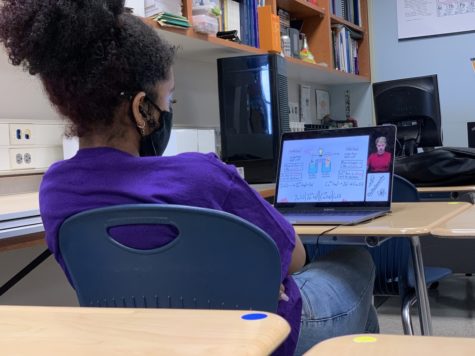Nobel Conference Inspires and Encourages Youth
From Einstein to Newton, the best minds of a generation last through the ages as legends. Yet it’s a rarity to see incredible minds while living, much less in action. But this is exactly what I had the privilege to do at the Nobel Conference at Gustavus Adolphus College this October.
Up first was Dr. George Smoot, Professor of Physics at the University of California, Berkeley. Dr. Smoot, a former guest on “The Big Bang Theory” and contestant on “Are you Smarter than a Fifth Grader?” was here to tell us about the physical history of the universe – specifically, what has happened since the Big Bang. One major technique Dr. Smoot has used to work at this daunting task has been to collect cosmic background radiation. The principle of cosmic background radiation is that light coming from things far away is from things that happened a long time ago, which essentially allows us to look back in time. If you look as far back as you possibly can – to the light coming in from the point farthest from us in the observable universe – you see a pattern of very large wavelength light, which shows us the moments immediately after the Big Bang. This same light has been stretched out so much that it accounts for some of the static you see on your television and hear on your radio. The fact that you can see for yourself proof of the Big Bang with your car radio is absolutely mind-boggling to me.
The next presenter was Dr. Lawrence Krauss, Foundation Professor of the School of Earth and Space Exploration. He is well known for being mentioned on Miley Cyrus’ twitter as well as being a high-profile atheist. By and large, he was the least soft-spoken person at the whole event. He wasn’t afraid to stick to his own ideas, and made sure we all knew it. He talked about the physical aspects of existence and being a high schooler – this was the most daunting topic on display that day. The mere topic of existence and inexistence is daunting in and of itself, much less how it relates to quantum mechanics and particle physics. But somehow, this was by far the most accessible lecture of the whole event. Dr. Krauss was entertaining, easy to understand, and inspiring. He made me so excited about my future and participation in human society that he may have been my favorite guest there. His lecture was followed by a rowdy Q&A section in which countless students, me included, finally engaged and asked questions.
Reverend Dr. George Coyne, S.J., was up next. He is a Jesuit Priest and someone struggling to reconcile his faith with a strong belief in the value of science in society. His presentation was about how he defined faith and religion, and how, ideologically speaking, the two don’t have to conflict with science. He separated the definitions of creation and origin, and explained the role God plays in his life. His lecture resonated well with me because I’m a firm believer that religion in its more pure and realistically applicable form doesn’t have to conflict with science. In fact, they should work well together. However, one must let go of dogma and tradition. I got a feeling from his lecture, and the debate that followed, that he did not happen to achieve this point. He seemed to grasp onto strongholds that make religion easier for the masses, and didn’t concern himself fully on things like morality and random rule-following. When questioned he seemed to almost instantaneously change his stance. Nonetheless, I think he stands for an important part of modern science.
There was one more lecture from Dr. Sylvester James Gates Jr., a Professor of Physics at University of Maryland, College Park. Some may know him as the guy who kind of looks like Morgan Freeman from the Nova series, “The Elegant Universe.” He stepped up on stage during the banquet at the end of the event. Closing the entire conference, Dr. Gates told a tantalizing story of his development in science. Titled the “Audience of Nature,” he provided an engaging overview of string theory, multiple dimensions, and science in general, which helped to define the role of the general populace in modern theoretical science. He also showed us tesseracts, which are the equivalent of the shadow of a 4 dimensional “cube:” Tesseracts are to a cube as a cube is to a square. This fascinated me. Being a visual person, I could finally see with my eyes what physicists describe with math. Dr. Gates then began to talk about religion. In his eyes, religion has no overlap with science. He believes there shouldn’t be a debate at all regarding having to live with both science and religion.












